Related Research Articles
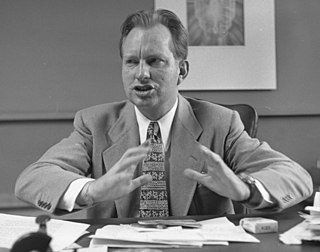
Lafayette Ronald Hubbard was an American author of science fiction and fantasy stories, and the founder of the Church of Scientology. In 1950, Hubbard authored Dianetics: The Modern Science of Mental Health and established a series of organizations to promote Dianetics. In 1952, Hubbard lost the rights to Dianetics in bankruptcy proceedings, and he subsequently founded Scientology. Thereafter Hubbard oversaw the growth of the Church of Scientology into a worldwide organization.
The Church of Scientology has been involved in court disputes in several countries. In some cases, when the Church has initiated the dispute, questions have been raised as to its motives. The Church says that its use of the legal system is necessary to protect its intellectual property and its right to freedom of religion. Critics say that most of the Church's claims are designed to harass Suppressive Persons, people who impede the progress of the Scientology movement.
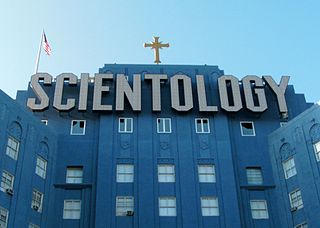
Since its inception in 1954, the Church of Scientology has been involved in a number of controversies, including its stance on psychiatry, Scientology's legitimacy as a religion, the Church's aggressive attitude in dealing with its perceived enemies and critics, allegations of mistreatment of members, and predatory financial practices, for example the high cost of religious training:191 and perceived exploitative practices. When mainstream media outlets have reported alleged abuses, representatives of the church have tended to deny such allegations.
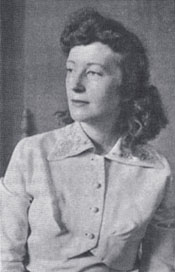
Mary Sue Hubbard was the third wife of L. Ron Hubbard, from 1952 until his death in 1986. She was a leading figure in Scientology for much of her life. The Hubbards had four children; Diana, Quentin, Suzette, and Arthur.
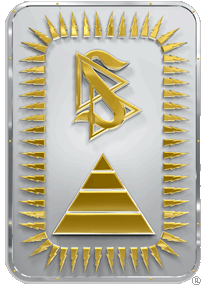
The Religious Technology Center (RTC) is an American non-profit corporation that was founded in 1982 by the Church of Scientology to control and oversee the use of all of the trademarks, symbols and texts of Scientology and Dianetics. Although RTC controls their use, those works are owned by another corporation, the Church of Spiritual Technology which is doing business as L. Ron Hubbard Library, registered in Los Angeles County, California.

Operation Snow White was a criminal conspiracy by the Church of Scientology during the 1970s to purge unfavorable records about Scientology and its founder, L. Ron Hubbard. This project included a series of infiltrations into and thefts from 136 government agencies, foreign embassies and consulates, as well as private organizations critical of Scientology, carried out by Church members in more than 30 countries. It was one of the largest infiltrations of the United States government in history, with up to 5,000 covert agents. This operation also exposed the Scientology plot 'Operation Freakout', because Operation Snow White was the case that initiated the U.S. government's investigation of the Church.

David Miscavige is the leader of the Church of Scientology. His official title is Chairman of the Board of the Religious Technology Center (RTC), a corporation that controls the trademarks and copyrights of Dianetics and Scientology. Miscavige was a deputy to church founder L. Ron Hubbard while he was a teenager. He rose to a leadership position by the early 1980s and was named Chairman of the Board of RTC in 1987. Official church biographies describe Miscavige as "the ecclesiastical leader of the Scientology religion".
The term Fair Game is used to describe policies and practices carried out by the Church of Scientology towards people and groups it perceives as its enemies. Founder of Scientology, L. Ron Hubbard, established the policy in the 1950s, in response to criticism both from within and outside his organization. Individuals or groups who are "Fair Game" are judged to be a threat to the Church and, according to the policy, can be punished and harassed using any and all means possible. In 1968, Hubbard officially canceled use of the term "Fair Game" because of negative public relations it caused, although the Church's aggressive response to criticism continued.

The Church of Scientology is a group of interconnected corporate entities and other organizations devoted to the practice, administration and dissemination of Scientology, a new religious movement. The movement has been the subject of a number of controversies, and the church has been described by government inquiries, international parliamentary bodies, law lords, and numerous superior court judgements as both a cult and a manipulative profit-making business. In some countries, it has attained legal recognition as a religion.
The Office of Special Affairs (OSA), formerly the Guardian's Office, is a department of the Church of Scientology International. According to the Church, the OSA is responsible for directing legal affairs, public relations, pursuing investigations, publicizing the Church's "social betterment works," and "oversee[ing its] social reform programs". Some observers outside the Church have characterized the department as an intelligence agency, comparing it variously to the CIA or the KGB. The department has targeted critics of the Church with dead agent operations and character assassination.
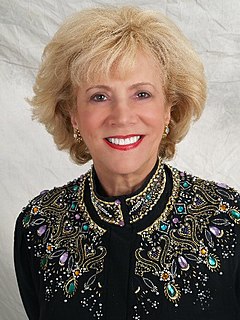
Operation Freakout, also known as Operation PC Freakout, was a Church of Scientology covert plan intended to have the U.S. author and journalist Paulette Cooper imprisoned or committed to a psychiatric hospital. The plan, undertaken in 1976 following years of church-initiated lawsuits and covert harassment, was meant to eliminate the perceived threat that Cooper posed to the church and obtain revenge for her publication in 1971 of a highly critical book, The Scandal of Scientology. The Federal Bureau of Investigation discovered documentary evidence of the plot and the preceding campaign of harassment during an investigation into the Church of Scientology in 1977, eventually leading to the church compensating Cooper in an out-of-court settlement.
The Scientology Justice system is the Church of Scientology's internal means of assessing and dealing with violations of their code of ethics. These violations include those outside the Church as well as within it.

Paulette Cooper is an American author and journalist whose writing against the Church of Scientology resulted in harassment from Scientologists. An early critic of the church, she published The Scandal of Scientology in 1971. She endured many years of attacks from church leadership and their agents, including lawsuits, smear campaigns, overt and covert surveillance, outright threats, and even a criminal frame-up. Church founder and leader L. Ron Hubbard was reportedly obsessed with her and personally plotted against her.
This is a Timeline Of Scientology, particularly its foundation and development by author L. Ron Hubbard.
Scientology in the United Kingdom is practised mainly within the Church of Scientology and its related groups which go under names including "Hubbard Academy of Personal Independence" and "Dianetics and Scientology Life Improvement Centre". The national headquarters, and former global headquarters, is Saint Hill Manor at East Grinstead, which for seven years was the home of L. Ron Hubbard, the pulp fiction author who created Scientology. Church-connected groups promoting aspects of L. Ron Hubbard's teaching, including Narconon and CCHR, have also been active in the UK, in some cases with charitable status. There have also been groups practising Scientology independently of the Church.

Scientology was founded in the United States by science fiction author L. Ron Hubbard and is now practiced in many other countries.

United States v. Hubbard was a 1978 criminal court case charging Mary Sue Hubbard and several other members of the Church of Scientology with violations of various laws including:
The Clearwater Hearings were a 1982 Clearwater, Florida commission that investigated the Church of Scientology and Project Normandy. Among the witnesses who testified were Ron DeWolf and various ex-Scientologists. The commission uncovered a number of illegal activities committed by the church, including:
The tax status of the Church of Scientology in the United States has been the subject of decades of controversy and litigation. Although the Church of Scientology was initially partially exempted by the Internal Revenue Service (IRS) from paying federal income tax, its two principal entities in the United States lost this exemption in 1957 and 1968. This action was taken because of concerns that church funds were being used for the private gain of its founder L. Ron Hubbard or due to an international psychiatric conspiracy against Scientology.
References
- ↑ Hubbard, L. Ron (1974). Scientology makes a safe environment. Organization Executive Course volume 0. Church of Scientology of California Publications Organization. p. 162.
- ↑ Stafford, Charles (May 12, 1980). "Scientology cases drag on and on". St. Petersburg Times. p. 3A.
- ↑ Girardi, Steven (May 9, 1982). "Witnesses Tell of Break-ins, Conspiracy". Clearwater Sun.
- ↑ Janie Peterson testimony. City of Clearwater Commission Hearing: The Church of Scientology. Transcript, May 8, 1982.
- ↑ Miller, Russell (1987). Bare-Faced Messiah . New York: Henry Holt & Co. p. 3. ISBN 0-8050-0654-0.
- ↑ Church of Scientology of California vs. Gerald Armstrong, Superior Court of the State of California for the County of Los Angeles, no. C 420153. Transcript of proceedings, Friday, May 11, 1984.